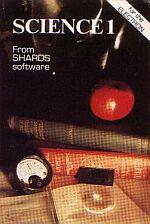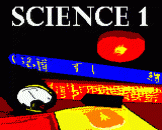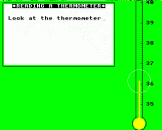Introduction
Science education for 11-16 year olds.
Covering the use of lenses, meters, thermometers and balances. In full graphics.
BALANCE: The operation and use of a balance
METER: How to use two different types of electrical meter
THERM: Using two different types of thermometer
LIGHT: A full explanation of a variety of lenses and mirrors
All the routines carry worked examples and a full scoring system
Parents/Teachers Notes
BALANCE
This is a front loaded for the next program. It must always be loaded if
the following program is being selected.
BALANCE1
This program is designed to show the principles of moments in a simple
and interesting way. The user can practise numerical examples on three
levels. The animated diver was introduced after initial school assess-
ment, as it was found that a proportion of the less numerate children
needed a little encouragement fully to explore the problems generated by
the program.
The large flashing arrows serve two purposes. Firstly, they signify a wrong answer and show the direction in which the incorrect answer would cause the bar to move. Secondly, the arrows can be clearly seen at a distance and allow the parent or teacher to monitor the child's progress.
METER
There are two 'meter' programs on this tape. This one is in full colour
using a 40 character display. It is intended for use on a black and
white or a colour TV. The program covers two types of electrical scales
and is based on the most popular make of meters found in schools. It
offers the option of estimation and interpolation without magnification.
One quite successful way of using this is to suggest that the child
always tries to answer at first without resorting to magnification. If
they get it wrong, they can see how close they were by magnifying the
scale.
THERM
Most children have some difficulty in reading scales. This program has
been designed to help children become proficient in the reading of three
types of thermometers. These are centigrade thermometers with 0-100 and
0-250 degree scale and clinical thermometers. The first option requires
only an integer as an answer and is therefore suitable for quite young
children. The five later options, as well as covering the other two most
commonly used thermometers in schools, also involve practice with
decimals in five levels of difficulty.
Option 'F' is graphically accurate to 0.02 degrees and most children will find this quite demanding. The program also allows children practice in estimation and interpolation if the scale is magnified. This should be encouraged as these are most useful skills.
LIGHT
This is a front loader for the next program. It must always be loaded if
the following program is being selected.
LIGHT1
This program is intended to introduce children to the idea of ray dia-
grams. The visual displays produced by the program are easily memorable
and allow some experimentation (the number of rays produced by the ray
box can be changed by the user). Option 'E' offers eight fairly easy
multiple choice questions.
Option 'F' produces sixteen questions. These include the questions from the previous section randomly mixed with harder questions.
These more difficult questions require more thought as they are reversals of the displayed ray diagrams. The easier questions are mixed in to ensure that the basics are well understood. The simulations and questions displayed in this program involve a simplification of the scientific principles of reflection and refraction.
The two main concerps which have been subject to simplification are: firstly, the refraction of light at both surfaces of a lens; the rays being shown to bend at the vertical line of symmetry. Secondly, the concave mirrors are displayed as spherical rather than parabolic. The refraction of light by a lens will be further explored in Fun to Learn 10.







